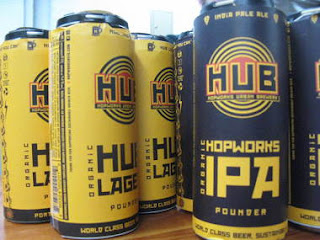 |
| Brutal Bitter, RIP - Long live Brutal IPA |
I have long thought that Rogue's very best beer was the exceptional, but unfortunately named, Brutal Bitter. Brutal was anything but: a subtle and brilliant Northwest take on an English Best or Extra Special Bitter. It is easily every bit as approachable as their flagship Dead Guy and very much a superior beer in my estimation. Despite this, it was devilishly difficult to find and I had often wondered as I perused the Rogue selection in my local markets why such lesser beers as Yellow Snow, Chocolate Stout and Stig's Northwest Ale are in abundance but no Brutal Bitter. I can only conclude that it is the name. 'Brutal' suggests in your face bitter while the beer was elegantly hopped and not a bit brutal at all. So it gave the wrong impression, those who bought it for the 179 IBUs were left unimpressed and those who didn't want 179 IBUs just didn't buy it at all.
I was heartened then, to hear that they were changing the name and I expected to be enjoying Rogue Best Bitter soon after buying it from the aforementioned local market. Alas the replacement name was not the brutal bit but the 'bitter' - replaced by 'IPA.' But it is not really that either, at 59 IBUs and 6% ABV it just barely hits the mark of an IPA and most northwest IPAs are closer to 7% ABV. And it is still not at all 'brutal.'
 |
| New name and quite a new recipe: from 6 to 8 ingredients and a much more citrus hop flavor. IBUs and ABV remain the same but the clolor is quite a bit lighter. |
|
|
I finally got around to trying the new Brutal IPA and was taken aback by the taste, which is when I discovered it got more than a name change. It is an entirely new beer. The new recipe is excellent, it is now more Northwesty with citrusy hops and slightly lighter in color, but otherwise it feels reasonably familiar - the heritage is evident. But excellent as it is, I lament the passing of my favorite Rogue beer. Brutal Bitter was a touchstone for me and was a beer I tired to emulate at home - unsuccessfully it has to be said - as I worked on what I called a NW Best Bitter.
But there is one possible silver lining: I expect the new recipe to be a real crowd-pleaser and if it is and I can find it in someplace other than super-specialty beer shops I'll consider it a good bargain. But I fear that the 'Brutal' moniker may work against it again. This is not California, we aren't impressed by smack-you-across the face bitterness and names like Bastard and Brutal don't appeal to us. But then again my finger might not be on the pulse of Oregon punters, after all Oregonians are gaga for Total Domination. Still Brutal Bitter did not seem to sell well, and it certainly was not the beer - so what then?
But let me put my plug in here for Brutal IPA. It is quite a nice entry into the NW IPA fantasia we have here in Oregon. A respectable companion to such faves as Total Dom, Watershed, Pelican, Blue Dot, Vortex, X-114 and so on. It maintains its English-inspired restraint and in that reminds me most of X-114. I hope it finds its market and I hope that market is near me.




